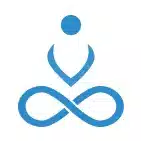What is Helm?
In simple terms, Helm is a package manager for Kubernetes. Helm is the K8s equivalent of yum or apt. Helm deploys charts, which you can think of as a packaged application. It is a collection of all your versioned, pre-configured application resources which can be deployed as one unit. You can then deploy another version of the chart with a different set of configuration.
Helm helps in three key ways:
- Improves productivity
- Reduces the complexity of deployments of microservices
- Enables the adaptation of cloud native applications
What are Helm charts?
Helm Charts are simply Kubernetes YAML manifests combined into a single package that can be advertised to your Kubernetes clusters. Once packaged, installing a Helm Chart into your cluster is as easy as running a single helm install, which really simplifies the deployment of containerized applications.
Features:
- Templating engine
- Ease in sharing and recording
Describing a Helm chart
Helm has a certain structure when you create a new chart. To create, run “helm create YOUR-CHART-NAME”. Once this is created, the directory structure should look like:
YOUR-CHART-NAME/
|
|- .helmignore
|
|- Chart.yaml
|
|- values.yaml
|
|- charts/
|
|- templates/
- .helmignore: This holds all the files to ignore when packaging the chart. Similar to .gitignore, if you are familiar with git.
- Chart.yaml: This is where you put all the information about the chart you are packaging. So, for example, your version number, etc. This is where you will put all those details.
- Values.yaml: This is where you define all the values you want to inject into your templates.
- Charts: This is where you store other charts that your chart depends on. You might be calling another chart which your chart may need to function properly.
- Templates: This folder is where you put the actual manifest you are deploying with the chart. For example you might be deploying an nginx deployment that needs a service, configmap and secrets. You will have your deployment.yaml, service.yaml, config.yaml and secrets.yaml all in the template dir. They will all get their values from values.yaml from above.
Gurzu is a Ruby on Rails company based in Nepal. Here at Gurzu we transform ideas into world-class products. Our professional team is fluent in 3Rs (Ruby on Rails, React and React Native). We’re ready to design, build and develop something that your users will love. We love building web applications and do so with extreme passion and craftsmanship.
Our services include following. Product Design. Web application development. Mobile application development. Technology trainings. Infrastructure setup and monitoring. Engineers/Designers leasing.

